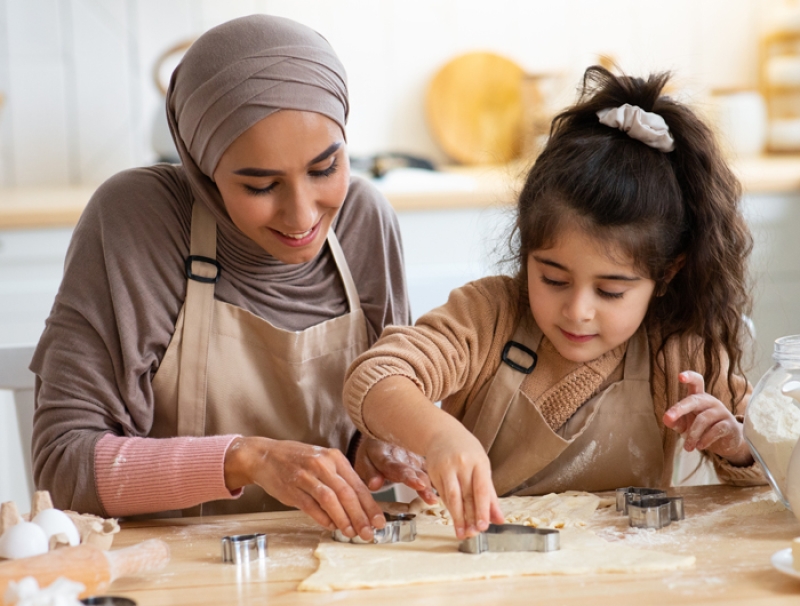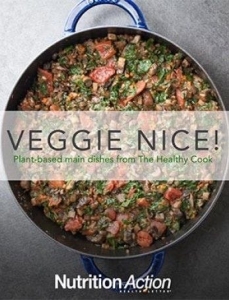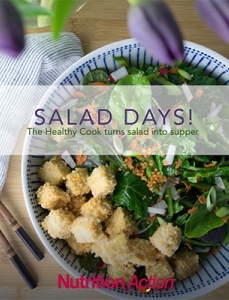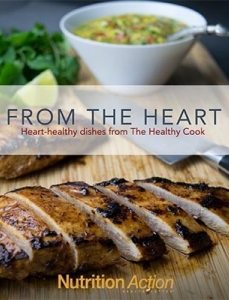6 food safety bloopers to avoid this holiday season
Whichever holidays you’re celebrating this season, don’t let food poisoning spoil them. Here are 6 lesser-known mistakes to avoid, especially if you’re at high risk—that is, over 65 or under 5, pregnant, or have a weakened immune system.
1. Tasting cookie dough (even if it’s vegan)
Even if it has no raw eggs, “say no to raw dough,” advises the Centers for Disease Control and Prevention.
The culprit: flour. Pathogens like E. coli “can contaminate grain while it’s still in the field or flour while it’s being made,” notes the CDC, adding that “steps like grinding grain and bleaching flour don’t kill harmful germs.”
Only cooking does. So always wash your hands and all surfaces after handling raw flour.

2. Roasting poultry “until the juices run clear”
“The only way to know whether a chicken or turkey is done is to use a thermometer,” says Benjamin Chapman, professor and director of the Safe Plates Program at NC State University. Don’t rely on a bird’s pop-up indicator, either.
Instead, buy an inexpensive digital food thermometer. The temperature should hit 165˚F in the thickest part of the breast and the innermost part of the thigh and wing.
3. Washing your hands…just once
Wash your hands with soap and water often. That means not just before you prep, serve, or eat food, but also after you touch your nose or handle raw meat, poultry, seafood, flour, or eggs.
Another mistake: using hand sanitizer. Yes, it kills most germs, so it’s better than nothing. But don’t count on alcohol-based sanitizers to protect you from norovirus—the “stomach bug” virus that peaks in winter and spreads from person to person or via contaminated food.
4. Leaving some kinds of pie out
Can you store homemade pies at room temperature? It depends.
Fruit pies
“There’s a lot of sugar in that pie,” says Chapman. And the apples, cherries, etc., have a low pH. High sugar levels and acid curb microbial growth. “So if we leave those pies out on the counter, bacteria are unlikely to grow.” (To keep pie fresh for more than a few days, refrigerate it, says the USDA.)
Pumpkin or sweet potato pie
“There’s still a lot of sugar there, but the pH is kind of in a gray area,” says Chapman. “Some pies will be fine at room temperature, but some might not.”
To be safe, refrigerate a homemade pumpkin or sweet potato pie. (If a store-bought one was sold at room temperature, you can keep it out.)
Also refrigerate bread pudding and any baked goods with cream cheese frosting or cream, custard, or cheese filling.
5. Overlooking undercooked foods
Some celebratory foods that may be hiding undercooked meat or eggs:
- Pâté. Cook chicken livers until they’re still “pink inside,” say many pâté recipes. Yikes. Dozens of Campylobacter and Salmonella outbreaks have been linked to undercooked chicken liver.
- Homemade eggnog. Its eggs may not be fully cooked. (Ditto for homemade ice cream, mousse, and tiramisu.) To be safe, gradually heat your mixture until a food thermometer hits 160˚F, or use pasteurized eggs. Most store-bought eggnog is pasteurized (check the label).
- Royal icing. The cookie-decorating icing is often made with raw egg whites. Use a pasteurized carton or “meringue powder” instead.
6. Letting leftovers languish
Leaving perishable foods out at room temperature is an invitation for bacteria that cause food poisoning—like Clostridium perfringens and Staphylococcus aureus—to multiply. Reheating may destroy bacteria but not its spores or toxins, which can cause diarrhea or vomiting. To lower your risk:
- Cool quickly. Refrigerate leftovers within 2 hours of cooking. Store hot food in shallow containers...and don’t stack them.
- Plan ahead. Freeze leftovers that you don’t expect to eat within 4 days.
Tags
Topics
Continue reading this article with a NutritionAction subscription
Already a subscriber? Log in




